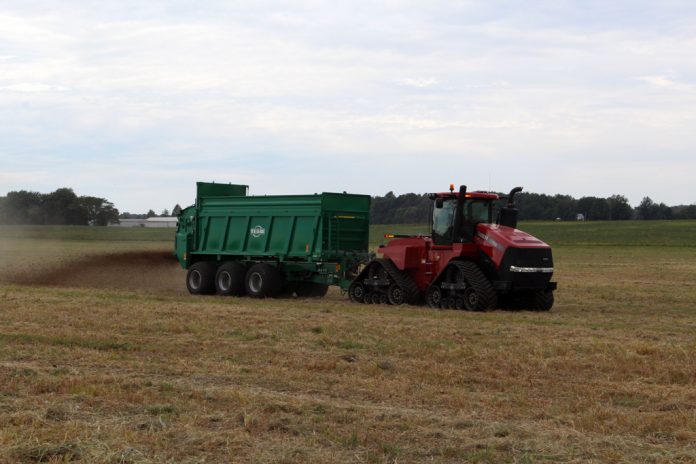Ohio State University Extension published the Dairy Excel 15 Measures of Dairy Farm Competitiveness bulletin to help dairy farmers evaluate business competitiveness using financial and production information. This article covers Measure Fifteen, Manure Nutrient Management.
The numbers
The land application of manure, milking parlor water, outdoor lot runoff and silage leachate is a necessary part of dairy farming. Manure transport and application is a significant expense on dairy farms and can easily approach $125 to $150 per cow annually.
Capturing the nutrients in dairy manure begins with a comprehensive nutrient management plan that is current and followed to assure manure nutrients are put where they are most needed. Manure contains the macro-nutrients nitrogen, phosphorus and potash, in addition to a wide array of micronutrients and is an excellent soil amendment.
Properly capturing the nutrients in dairy manure can reduce purchased fertilizer costs, enhance crop yields and prevent buildup of soil phosphorus above maintenance levels.
The nutrient value of dairy manure will vary from farm to farm depending on feed rations, how the manure is handled and stored, bedding materials used, surface water runoff entering the manure storage, silage leachate and ages of the animals contributing to the manure volume. Thus, it’s very important to get a representative manure sample.
A dairy cow and her replacement stock on the farm typically need about an acre of ground to feed the animals (corn silage), and when the manure is returned to the fields where the feed was grown, we have a closed loop system.
It is very important to work closely with your commercial fertilizer provider, so manure nutrients are properly credited and additional unnecessary phosphorus and potash are not added to fields receiving adequate phosphorus and potash through manure application.
Nutrients
The best utilization of dairy manure is to apply the manure to a growing crop. Examples include fall fertilization of wheat, application to newly planted double-crop soybeans to spur germination and emergence, application to sorghum/sudan grass to stimulate emergence and growth or regrowth after a cutting, or as a stimulant between cuttings of forages.
Each of these applications captures the nitrogen in the manure along with many of the other nutrients. Applying manure to growing crops helps gain more revenue from the manure.
Research results
The application of manure to corn as a sidedress source of nitrogen has been the focus of research at the Ohio Agricultural Research and Development Center’s Northwest station. Over five crop seasons, dairy manure was both incorporated and surface broadcast onto pre-emergent and post-emergent corn plots and compared to 28% urea-ammonium nitrate for yield.
In these research plots, the dairy manure was applied at 13,500 gallons per acre and contributed 135 pounds of nitrogen. Each treatment received 200 pounds of nitrogen. The remaining 65 pounds of nitrogen for the dairy manure treatments was provided by 28% urea-ammonium nitrate.
The data show that incorporated dairy manure out-yielded 28% urea-ammonium nitrate by 16.1 bushels per acre on the pre-emergent plots and by 19.2 bushels per acre on the post-emergent plots. The surface applied manure produced significantly lower yields as the nitrogen in the manure likely was lost to the environment.
Summary
Managing livestock manure nutrients will continue to be a challenge facing farmers. Farmers are encouraged to account for the nutrient value of livestock manure, develop a management plan for manure application, apply manure to crops that will benefit most and maintain appropriate records.














